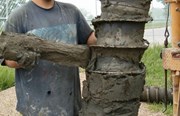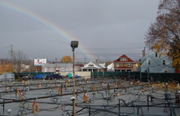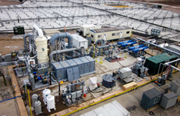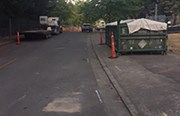What is Automated Injection and How Does It Work?
By: Eric MoskalWhether you’re new to the environmental services industry or have years of remediation experience under your belt, you are most likely intrigued by the concept of automated injection systems. This technology represents a huge leap forward but, as with any new advance, there are understandably questions about how it works and when it makes sense to utilize it.
In this blog post, I’ll cover the basics of what automated injection is, how it works, when you should consider it, and the benefits it can provide on your remediation projects.
If you’d like a deep dive into optimization options, register for next week’s webinar, Ultimate Optimization: Key Methods for Optimizing Injection Projects.
What is automated injection?
For many years, injecting chemistries into the subsurface was a manual procedure—a skilled field expert would use equipment like a direct push technology (DPT) rig to force amendments into the ground to the depths where contaminants were identified. Depending on the extent of contamination, this process would be repeated at multiple locations on the site to ensure the amendment had proper distribution. The field experts would then need to monitor the pressures and flow rates of each injection location by hand. Many consultants found that these logs were not always complete or entirely accurate, as they relied too heavily on the human component. Additionally, the lag time between logging and analyzing the data delayed any optimization efforts that consultants wanted to make.
Injection became more advanced with the introduction of manifolding. This meant that multiple locations could receive injected chemistries at one time. Although it was an improvement, field experts were still required to monitor individual injection locations and log pressures and flow rates by hand.
Fully automated injection is the next generation of injection technology, and removes much of the imprecision that comes with manual processes. It builds on the benefits of manifolding so that multiple locations can receive injections at once, and incorporates a system that continuously monitors and maintains specific injection pressures and flow rates you can choose based on subsurface geological and hydrogeological data.
How does automated injection work?
Based on the depth of the treatment interval and lithology, you first must determine the flow rate and pressure range for your injection, keeping in mind it must avoid exceeding fracture pressures. Once this is set and activated, an automated system allows injections to proceed within the range specified.
For example, if your goal is to maximize flow rate but stay below a certain fracture pressure threshold, the system would allow the injectate to flow into the subsurface until the pressure registered by the system reached the threshold. Then, it would automatically adjust the valve to reduce flow and pressure to stay below the threshold.
Where should automated injection be used?
While automated systems can be used for any injection project, you see the greatest benefits on sites where precise control is required to obtain proper contact of chemistries with contaminants.
One example would be transmissive zones that you want to target as a reactive barrier to cut off contaminant flux. Another suitable application would be at sites where injection occurs at shallow depths, and short circuiting must be eliminated.
What are the main benefits of using automated injection?
Utilizing an automated injection system gives you more control. You’re able to more accurately target distribution and contact of the remedial chemistries you’ve selected, and supporting documentation is generated by default in real-time. This enables you to make adjustments on the fly to optimize performance if needed.
All of these small advantages add up, and ultimately result in a lower overall remediation cost and reduced time required to achieve your remediation groundwater requirements.
Are there drawbacks to using automated injection?
No. Not only does automated injection improve the efficacy of your injected chemistries and provide better, more complete data, it also satisfies regulatory concerns regarding other injection approaches that can spread contamination if not adequately controlled.
Hopefully this gives you a good starting point for evaluating an automated injection approach for future projects. If you’d like to learn more, read about our own proprietary system, the Pathfinder.
You can also join our experts next week for our webinar, Ultimate Optimization: Key Methods for Optimizing Injection Projects. You’ll have the opportunity to get your questions answered in real-time.
AUTOMATED INJECTION RESOURCES
ABOUT THE AUTHOR

Eric Moskal
Technical Expert
[email protected]
Eric Moskal is a Senior Project Manager at Cascade Environmental. He specializes in remediation projects that involve large scale, difficult locations and conditions, and low permeability geology. In this role, Eric collaborates with his clients to identify a cost-effective, site-specific methodology for delivering amendments that will achieve their remedial goals. Previous projects have included everything from the site of a former corner gas station to personal residences to large federal sites.
Eric is a national expert on pneumatic and hydraulic emplacement of chemical oxidants, zero-valent iron (ZVI) and combined ZVI-bioremediation remedies for complex chlorinated solvent sites, as well as remediation engineered activated carbon for complex petroleum sites. He also provides pneumatic permeability enhancement of finer grained soils to optimize soil vapor extraction (SVE) systems for both hydrocarbons and chlorinated solvents removal.
Eric has over a decade of practical experience in the environmental services industry. He has extensive hands-on field experience overcoming site-specific challenges that become evident once field applications commence. Eric is an excellent resource for clients needing delivery of in situ solutions at sites where traditional injection is not viable.












